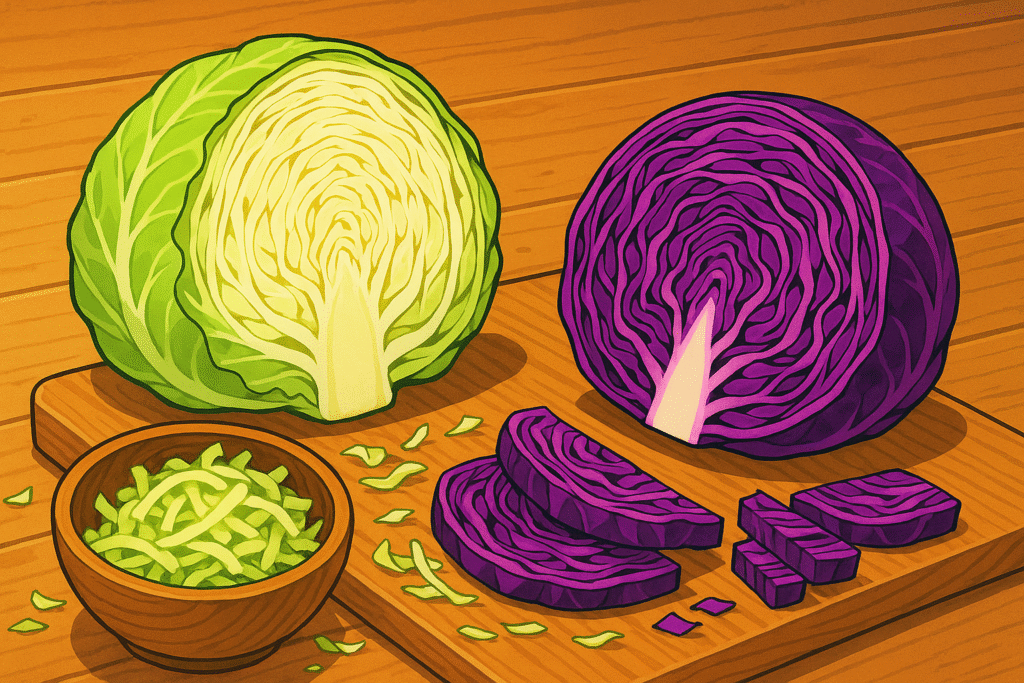Cabbage (Brassica oleracea var. capitata)

About Cabbage
Cabbage is a dense, leafy vegetable with a crisp bite and subtle sweetness. It’s the backbone of countless cuisines — braised, fermented, sautéed, or raw in slaws.
Whether red, green, or savoy, cabbage offers crunch, durability, and a mild flavor that absorbs seasonings beautifully.
The History of Cabbage
Cultivated for over 4,000 years, cabbage has roots in the Mediterranean, where wild leafy greens were bred into the compact head we know today.
It was a staple in ancient Roman diets and later became a survival food in colder European regions thanks to its long storage life. Fermented cabbage — from kimchi to sauerkraut — became a vital source of nutrition before refrigeration.
It’s revered in Eastern European, Korean, and German cuisines, and remains a global workhorse ingredient.
The Science of Cabbage
Cabbage contains glucosinolates — sulfur compounds with potential anticancer properties. It’s also a source of vitamin K, C, and fiber, and becomes sweeter when lightly cooked.
Red cabbage contains anthocyanins, which act as natural pH indicators — turning blue in alkaline environments and pink in acid.
The Geography of Cabbage
It grows well in cool climates, often harvested in late fall. Major producers include China, Russia, India, Poland, and Germany.
In Korea, cabbage fuels kimchi production. In Germany, it’s the base for sauerkraut. In Mexico and Central America, it’s the base for curtido. It’s global, hardy, and endlessly versatile.
Varieties of Cabbage
Green Cabbage
Classic round head with tightly packed leaves. Mild and crunchy — great raw or cooked.
Red Cabbage
Deep purple leaves, slightly peppery and beautiful in salads, slaws, and pickles.
Savoy
Wrinkled, tender leaves and mild flavor. Cooks quickly — ideal for stuffing or sautéing.
January King
Cold-hardy with variegated purple-green leaves. Sweet and excellent for roasting or braising.
Napa Cabbage (Chinese Cabbage)
Elongated, pale and tender — essential for kimchi and stir-fries.
FAQs All your questions about Cabbage: answered
Is cabbage better raw or cooked?
It depends — raw for crunch, cooked for sweetness. Fermented for gut health!
Why does cabbage smell when cooked?
Overcooking releases sulfur compounds. Short cooking at high heat keeps the flavor fresh.
Can you eat the outer cabbage leaves?
Yes — just remove any that are wilted or damaged. They’re great in soups or wraps.
What’s the best way to store cabbage?
Whole heads keep for weeks in the fridge. Once cut, wrap tightly and use within a few days.